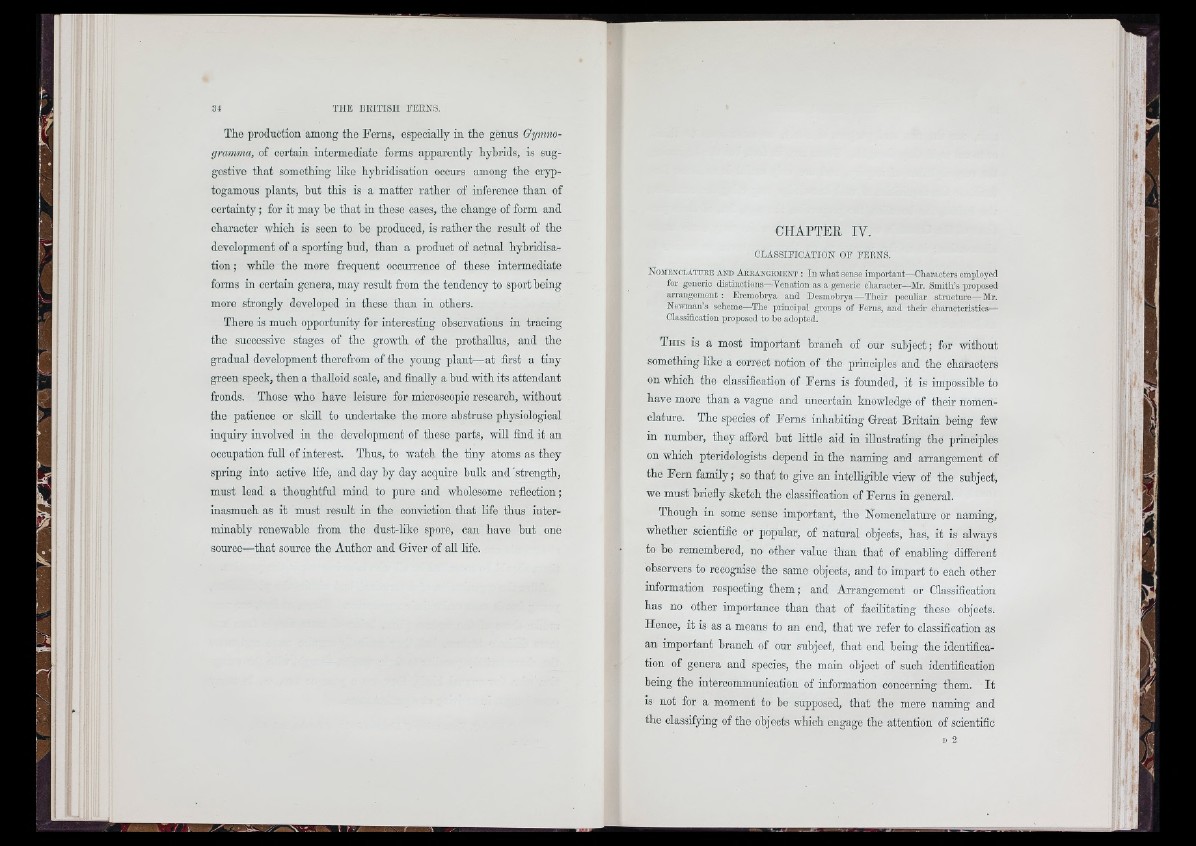
The production among tho Foms, especially in the genus Gymno-
gramma, of certain intermediate forms apparently hybrids, is suggestive
that something like hybridisation occurs among the cryp-
togamous plants, but this is a matter rather of inference than of
certainty; for it may be that in these oases, the change of form and
character which is seen to bo produced, is rather tho result of the
development of a sporting bud, than a product of actual hybridisation
; while the moro frequent oocurrence of those intermediate
forms in certain genera, may result from the tendency to sport being
moro strongly developed in these than in others.
There is much opportunity for interesting observations in tracing
tho successive stages of the growth of the prothallus, and tho
gradual development therefrom of the young plant—at first a tiny
groen speck, then a thalloid scale, and finally a bud with its attendant
fronds. Those who have leisure for microscopic research, without
the patience or skill to undertake the more abstruse physiological
inquiry involved in the development of these parts, will find it an
occupation full of interest. Thus, to watch the tiny atoms as they
spring into active life, and day by day acquire bulk and 'strength,
must lead a thoughtful mind to pure and wholesome reflection;
inasmuch as it must result in the conviction that life thus interminably
renewable from the dust-like spore, can have but one
source—that source the Author and Giver of all life.
CHAPTER IV.
CLASSIFICATION OF FERNS.
N o m e s c l a t u k e a n h A b b a n g e m e n t : In wliat senso important— Characters employed
for generic distinctions—-Venation as a generic character—Mr. Smith’s proposed
a rran g emen t: Eremohiya and Dcsmohiya—Their peculiar s tru c tu re— Mr.
Newman’s -scheme—The principal groups of Ferns, and th e ir characteristics—
Classification proposed to ho adopted.
T h is is a most important branch of our subject; for without
something lilm a correct notion of tho principles and the characters
on which the classification of Ferns is founded, it is impossible to
have more than a vague and uncertain knowledge of thoir nomenclature.
The species of Forns inhabiting Great Britain being few
in number, they afford hut little aid in illustrating the principles
on which pteridologists depend in tho naming and arrangement of
the Fern family; so that to give an intelligible view of the subject,
we must briefly sketch the classifloation of Forns in general.
Though in some sense important, the Nomenclature or naming,
whether scientific or popular, of natural objects, has, it is always
to bo remomborod, no other value than that of enabling different
observers to recognise the same objects, and to impart to each other
information respecting them; and Arrangement or Classification
has no other importance than that of facilitating these objects.
Honcc, it is as a means to an end, that wo refer to classification as
an important branch of our subject, that end being the identification
of genera and species, tho main object of such identification
being tho intercommunication of information concerning them. I t
is not for a moment to he supposed, that tho more naming and
the classifying of the objects which engage the attention of scientific
1:'
If
?!
M ,
11 '
? f ^ ^
U l i
'r .» l
. t,
■'1